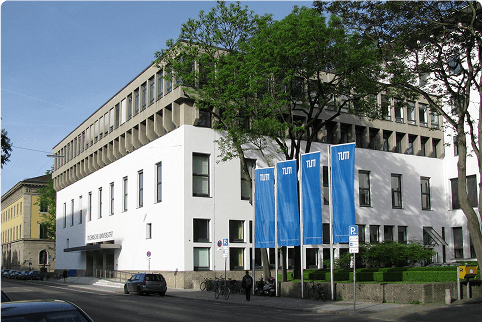Learning a new language, especially Italian, presents a fascinating journey into a rich tapestry of cultures, literature, and history. Italian, spoken by over 67 million people globally, serves as a bridge to exploring diverse cultures, enhancing career prospects, and fostering personal growth. Vaia emerges as an essential ally in this linguistic odyssey, revolutionizing Italian language learning through a blend of innovative technology and comprehensive educational resources, making the process accessible, efficient, and captivating.
Learning Italian: Introduction
Italian is more than just a means of communication; it's a gateway to understanding a plethora of cultures across Europe. As one of the major European languages, Italian plays a crucial role in international diplomacy, business, and the arts. Whether you're keen on delving into the profound depths of Italian literature, navigating social nuances, or immersing yourself in Italian cinema and cultural practices, mastering Italian offers endless opportunities.
Key Facts About Italian
These insights underscore the vast scope, influence, and unique aspects of Italian, highlighting its global importance and distinctive place among world languages.
- Number of Speakers: Italian boasts over 67 million speakers globally, including native and second-language speakers.
- Global Ranking: Italian is among the top 20 most spoken languages worldwide.
- Countries with Italian as an Official Language: Italy and some areas of Switzerland recognize Italian as an official language, along with significant linguistic communities in the Americas and Europe.
- Language Family: Italian belongs to the Romance language family, deriving from Latin.
- Vocabulary Richness: The Italian language contains around 200,000 words in its common lexicon.
- Learning Category for English Speakers: Classified as Category I, Italian is considered relatively easy for English speakers, requiring approximately 600 hours of study for proficiency.
- Alphabet System: Italian uses the Latin alphabet with 21 letters.
- Gendered Nouns: Italian nouns are gendered, categorized as either masculine or feminine.
- Verb Conjugations: Italian verbs are conjugated in numerous tenses and moods, reflecting variations in person and number.
Vaia: Your Portal to Italian Proficiency
Vaia is uniquely designed to enrich your Italian learning journey, equipped with all the necessary tools for success.
- Interactive Flashcards for Italian Vocabulary: Enhance your Italian vocabulary with thousands of interactive flashcards. Tailor your learning experience by creating personalized, AI-powered flashcards.
- Comprehensive Overviews on Italian Grammar: Master the complexities of Italian grammar with detailed summaries. From verb conjugation to sentence structure, we provide clear explanations.
- Intelligent Study Plans and Analytics: Keep your learning on track with smart study plans. Monitor your progress with detailed analytics and adapt your study habits for optimal results.
- Collaborative Study Groups: Connect with fellow Italian learners. Exchange notes, quiz each other, and engage in meaningful discussions to deepen your understanding of Italian language and culture.
- AI-Powered Practice Exams: Prepare for exams with unlimited practice tests offering instant feedback.
Vaia is available online and offline, completely free of charge, ensuring that your Italian learning journey is both comprehensive and cost-effective.
What You'll Achieve with Vaia
Our platform covers a wide array of topics related to the Italian language and culture. Here's a preview of what's in store:
Italian Grammar
Italian grammar explores the foundation of the language. From gender agreements to complex verb tenses, our resources simplify these concepts for learners at all levels.
| Grammar Component | Description |
|---|
| Nouns and Articles | Introduction to masculine and feminine nouns, including the use of definite (il, la, i, le) and indefinite articles (un, una, degli, delle). |
| Adjectives | Rules for the agreement of adjectives with nouns in gender and number, and the placement of adjectives relative to nouns. |
| Verbs and Conjugation | Overview of verb conjugations in various tenses (present, past, future) and moods (indicative, subjunctive, conditional), including irregular verbs. |
| Pronouns | Study of different types of pronouns, including subject pronouns (io, tu, lui/lei, etc.), direct and indirect object pronouns (mi, ti, lo/la, etc.), and reflexive pronouns (mi, ti, si). |
| Adverbs | Formation and placement of adverbs in sentences, and their role in modifying verbs, adjectives, or other adverbs. |
| Prepositions | Use of prepositions to express relationships of direction, location, time, and other abstract concepts. |
| Questions | Formation of questions using question words (chi, cosa, quando, come, perché) and the inversion of subject and verb. |
| Negation | Constructing negative sentences using "non" and other negative expressions (mai, nessuno, niente, etc.). |
| Essere and Avere | Distinctions between "essere" (to be) and "avere" (to have) for forming compound tenses and their uses in various grammatical contexts. |
| Subjunctive Mood | Introduction to the subjunctive mood to express wishes, doubts, emotions, and hypotheticals, including trigger phrases and conjugation patterns. |
| Imperatives | Forming commands in the affirmative and negative for informal (tu, voi) and formal (Lei, Loro) speech. |
| Prepositional Articles | Understanding the combination of prepositions with definite articles to form prepositional articles (del, al, sul, etc.). |
| Passive Voice | Use and formation of the passive voice, focusing on its construction with "essere" and the past participle. |
| Direct and Indirect Speech | Conversion between direct and indirect speech, including changes in tense, pronouns, and sentence structure. |
| Compound Tenses | Use and formation of compound tenses, particularly the present perfect and past perfect, to discuss actions in relation to time. |
Italian Literature and Film
Studying Italian literature in high school typically includes an exploration of significant works and authors who have shaped the Italian literary tradition. Here's a list of literature and literary figures commonly studied:
Dante Alighieri - Often referred to as the "Father of the Italian language," Dante's works are crucial in Italian studies. His most famous work, The Divine Comedy, is an epic poem that explores themes of the afterlife in Inferno, Purgatorio, and Paradiso.
Petrarch (Francesco Petrarca) - Known for developing the sonnet form, his collection Canzoniere is a staple in the study of Italian poetry, containing poems devoted to his idealized love, Laura.
Giovanni Boccaccio - Best known for The Decameron, a collection of 100 tales told by a group of young men and women sheltering in a secluded villa just outside Florence to escape the Black Plague. It offers insights into the medieval mindset and early Renaissance.
Niccolò Machiavelli - His treatise The Prince remains a significant exploration of political power, leadership, and the realities of ruling, making it an essential study in both literature and political philosophy classes.
Ludovico Ariosto - Famous for Orlando Furioso, an epic poem that expands on the stories of King Charlemagne and Roland, blending romance, chivalry, and adventure.
Torquato Tasso - Known for his epic poem Jerusalem Delivered, which narrates a highly fictionalized version of the First Crusade, wherein Christian knights battle Muslims to take Jerusalem.
Alessandro Manzoni - His novel The Betrothed (I Promessi Sposi) is considered one of the masterpieces of world literature, providing a vivid portrayal of life in 17th-century Lombardy and a deep moral understanding of human suffering and redemption.
Giacomo Leopardi - A poet and philosopher whose works, like the collection Canti, are lyrical explorations of nature, philosophy, and emotion, showcasing his deep pessimism and insight.
Italo Calvino - Known for his imaginative narratives and styles, Calvino’s works such as Invisible Cities, and If on a winter's night a traveler are often included in modern literature courses.
Umberto Eco - A modern novelist and semiotician, his works like The Name of the Rose, which is a historical mystery combining semiotics, biblical analysis, medieval studies and literary theory, are popular in contemporary literature classes.
Italian Culture and Social Issues
Engage with the rich cultural heritage of Italy and examine social issues within Italian society. Discussing current events and societal debates enriches your vocabulary and provides a real-world context for language learning.
| Cultural Aspect/Social Issue | Description |
|---|
| Family Dynamics | The importance of family in Italian society, including extended family relationships and the concept of "familismo" as a central pillar of social life. |
| Festivals and Traditions | Key celebrations such as Carnevale, Ferragosto, and local festivals like Siena's Palio and Venice's Regata Storica. These events are rich in history and unique cultural practices. |
| Cuisine | The role of food in Italian cultural identity, exploring regional dishes and the significance of culinary traditions like pizza from Naples, pasta dishes from various regions, and the slow food movement. |
| Music and Opera | The influence of Italian music, focusing on classical traditions, opera (with emphasis on composers like Verdi and Puccini), and contemporary Italian music. |
| Art and Architecture | An overview of Italy’s contribution to the arts, including Renaissance art, Baroque influences, and modern architecture, highlighting figures like Leonardo da Vinci, Michelangelo, and Renzo Piano. |
| Language and Dialects | The diversity of Italian dialects and their significance in cultural identity, including the role of the Italian language in unifying Italy's various regions. |
| Fashion and Design | Italy’s impact on the fashion industry, examining the growth of major fashion capitals like Milan and Florence, and the influence of designers like Giorgio Armani and Prada. |
| Cinema | The history of Italian cinema, focusing on movements such as Neorealism, and influential filmmakers like Federico Fellini and Roberto Rossellini. |
| Economic Issues | Discussion on economic challenges such as youth unemployment, the north-south divide, and the impact of economic policies on everyday life in Italy. |
| Immigration | The dynamics of immigration in Italy, the integration of immigrants, and the social and political challenges associated with a growing immigrant population. |
| Historical Legacy and Memory | How Italy deals with its historical past, including the Roman Empire, the Renaissance, and the period of Fascism under Mussolini. |
| Environmental Concerns | Environmental issues facing Italy, such as pollution in major cities, the management of water resources, and conservation efforts in areas like the Venice Lagoon. |
| Gender Roles and Feminism | Evolving perspectives on gender, the role of women in Italian society, and the impact of feminist movements. |
| LGBTQ+ Rights | The status of LGBTQ+ rights in Italy, including legal protections, societal attitudes, and the influence of the Catholic Church. |
| Education System | The structure of the Italian education system, educational reforms, and issues such as access to higher education and the role of education in social mobility. |
Ace Italian with Vaia
Whether starting from scratch or aiming to refine your Italian skills, Vaia is your ideal platform. We offer a structured, enjoyable, and thorough approach to language learning. Embrace this challenge and transform your language skills with Vaia. Join us today and start your journey to Italian fluency.
Explanations
ExplanationsTextbooks
Exams
ExamsGCSE
IGCSE
IGCSEAS
ASA Level
A LevelInternational A Level
International A LevelUniversity Admissions Tests
University Admissions Tests




